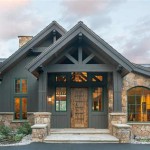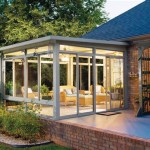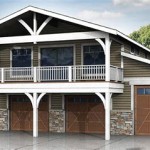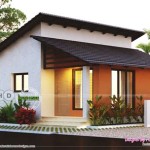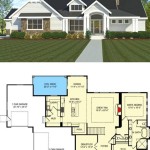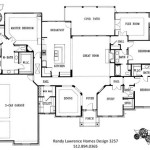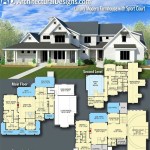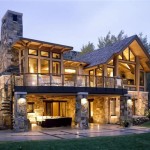Exploring Plans for Decks and Porches: Design, Materials, and Construction
Decks and porches extend the living space of a home, offering opportunities for relaxation, entertainment, and connection with the outdoors. Careful planning is essential to ensure these structures are functional, aesthetically pleasing, and structurally sound. This article delves into key considerations for deck and porch plans, encompassing design principles, material selection, and construction techniques.
Understanding Deck and Porch Design Principles
Designing a deck or porch requires a thorough understanding of the surrounding environment, architectural style of the house, and intended use of the space. The size and shape of the structure should be proportionate to the house and the available yard space. Consider the traffic flow from the interior of the house to the deck or porch, as well as the flow of movement across the structure itself.
Orientation to the sun is a critical factor. Southern exposure provides the most sunlight, while northern exposure offers more shade. Eastern exposure offers morning sun, while western exposure offers afternoon sun. The intended use of the space will dictate the optimal orientation. For example, a deck intended for evening dining might benefit from western exposure, while a porch used for relaxing during hot afternoons might be better suited for northern or eastern exposure.
Accessibility is another crucial design element. Consider the needs of all potential users, including those with mobility limitations. Ramps, wider doorways, and level surfaces can make the space more accessible. Building codes often dictate specific requirements for accessibility, so it's essential to consult local regulations.
Privacy is also a factor to consider. If the deck or porch is located in a high-traffic area or close to neighboring properties, incorporating privacy screens, lattices, or landscaping can create a more secluded and comfortable space. The design should integrate seamlessly with the existing landscape and architectural style of the house. This might involve using similar materials and colors or incorporating design elements that complement the existing structure.
Finally, consider the overall aesthetic appeal. The deck or porch should enhance the curb appeal of the house. This can be achieved by using high-quality materials, incorporating attractive design features, and maintaining the structure in good condition. A well-designed deck or porch adds value to the property and enhances the overall living experience.
Selecting Appropriate Materials for Decks and Porches
The choice of materials significantly impacts the durability, aesthetics, and cost of a deck or porch. Common materials include wood, composite decking, and concrete. Each material has its own advantages and disadvantages, and the selection should be based on factors such as budget, climate, and desired aesthetic.
Wood is a traditional and popular choice for decks and porches. It offers a natural look and feel and is relatively easy to work with. Common wood species include pressure-treated lumber, cedar, redwood, and ipe. Pressure-treated lumber is a cost-effective option that is resistant to rot and insect damage. However, it requires regular maintenance to prevent warping and cracking. Cedar and redwood are naturally resistant to rot and insects and offer a more attractive appearance than pressure-treated lumber. Ipe is a dense, durable hardwood that is highly resistant to rot, insects, and wear. However, it is more expensive and requires specialized tools for installation.
Composite decking is a low-maintenance alternative to wood. It is made from a combination of wood fibers and plastic and is resistant to rot, insects, and fading. Composite decking is available in a variety of colors and textures and can mimic the look of natural wood. However, it can be more expensive than pressure-treated lumber and may not have the same natural look and feel as wood. Some composite decking materials can also get very hot in direct sunlight.
Concrete is a durable and versatile material that can be used for decks and porches. It can be poured in place or precast and can be stained, stamped, or textured to create a variety of looks. Concrete is resistant to rot, insects, and fire. However, it can be more expensive than wood or composite decking and may require specialized equipment for installation.
In addition to the decking material, other materials to consider include railings, posts, and fasteners. Railings can be made from wood, metal, glass, or composite materials. Posts can be made from wood, metal, or concrete. Fasteners should be corrosion-resistant to prevent rust and staining. The selected materials should be compatible with the overall design and aesthetic of the deck or porch.
Local climate conditions should also influence material selection. In areas with heavy rainfall or snow, materials that are resistant to moisture and rot are essential. In areas with high temperatures, materials that are resistant to fading and warping are preferable. Consider the long-term maintenance requirements of each material and choose materials that are easy to clean and maintain. Proper installation is essential to ensure the longevity and durability of the deck or porch. Always follow the manufacturer's instructions and consult with a qualified contractor if needed.
Key Considerations During Deck and Porch Construction
Constructing a deck or porch requires careful planning and execution to ensure structural integrity and adherence to building codes. Obtaining the necessary permits is a critical first step. Local building codes regulate various aspects of deck and porch construction, including size, height, railing requirements, and foundation specifications. Failing to obtain the required permits can result in fines and delays.
The foundation is the most crucial element of a deck or porch. It provides support for the entire structure and must be strong enough to withstand the weight of the deck, as well as any additional loads, such as furniture and people. Common foundation options include concrete footings, piers, and slabs. The type of foundation required depends on the soil conditions, size of the deck or porch, and local building codes. Concrete footings should extend below the frost line to prevent heaving and cracking during freeze-thaw cycles. Piers should be properly spaced and secured to the ground. Slabs should be reinforced with steel to prevent cracking.
Framing provides the structural support for the decking. It typically consists of joists, beams, and posts. Joists are the horizontal members that support the decking. Beams are the horizontal members that support the joists. Posts are the vertical members that support the beams. The size and spacing of the framing members depend on the span and load requirements. The framing should be constructed from pressure-treated lumber to prevent rot and insect damage. All connections should be properly fastened with corrosion-resistant screws or nails.
Railing systems are required for decks and porches that are a certain height above the ground. Railings prevent falls and provide a safety barrier. Building codes typically specify minimum height requirements for railings and maximum spacing between balusters. Railings can be made from wood, metal, glass, or composite materials. The railing system should be securely attached to the framing and should be able to withstand lateral loads. Stairs should be designed and constructed in accordance with building codes. The rise and run of the stairs should be consistent, and the stairs should be wide enough to accommodate safe passage. A handrail should be provided on at least one side of the stairs.
Proper drainage is essential to prevent water damage. The deck or porch should be sloped slightly away from the house to allow water to run off. Gutters and downspouts can be installed to collect rainwater and divert it away from the foundation. The ground around the deck or porch should be graded to ensure proper drainage.
Electrical wiring should be installed by a qualified electrician in accordance with local electrical codes. Any electrical outlets or lighting fixtures should be weatherproofed to prevent damage from the elements. Gas lines should be installed by a qualified gas fitter in accordance with local gas codes. Any gas-fired appliances should be properly vented to prevent carbon monoxide poisoning.
Inspections are typically required at various stages of construction to ensure compliance with building codes. Common inspections include foundation inspection, framing inspection, and final inspection. It is crucial to schedule inspections in advance and to correct any deficiencies identified by the inspector. Following these construction guidelines helps ensure a safe, durable, and aesthetically pleasing deck or porch.

Porch Deck Plans W Slanted Roof Decks Com

How To Design Build A Deck Lowe S

The Complete Manufactured Home Porch Manual With 100 Photos Mobile Living

Norcrest Entry Porches 8x6 E Plan Mother Earth News

51 Deck Ideas To Transform Your Outdoor Space Premium Decking Supply

How To Build A Roof Over Deck Complete Guide Decks Com

33 Stunning Patio Deck Ideas For Your Yard Buildtuff Usa

Deck Planning How To Get Started

14 Backyard Deck Ideas To Upgrade Your Outdoor Space

Deck On Front Of House Marty S Musings

